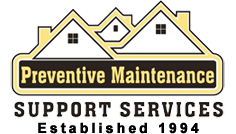 Having fireplace inside the house makes the house warmer. It is normal over the time, the fireplace and chimney will accumulate lots of dirt. To keep things simple and safe, clean the fireplace regularly and know that it is well built.
Having fireplace inside the house makes the house warmer. It is normal over the time, the fireplace and chimney will accumulate lots of dirt. To keep things simple and safe, clean the fireplace regularly and know that it is well built.
The following signs indicate a chimney in need of a cleaning. Firstly, the burned wood odors coming from the fireplace when it’s not being used. Another sign is the fire seems to burn poorly or that dump a bunch of smoke into the room. In addition to that, the occurrence of a black damper. Since it sits right above the firebox, the damper is often the easiest thing to see and reach. And it gets caked with creosote. Look or reach inside, and see what is inside. If black gunk is found, pull out chunks of the stuff, there’s a good amount of creosote built up inside.
How often chimney cleaning needed depends on a great deal on how much the usage. The kinds of fires built up and the type of wood used will also determine the frequency. As a rule of thumb, it’s a good idea to have chimneys cleaned at least once a year, usually before cold weather sets in. Some people prefer to do it in the spring, and some chimney sweeps offer special promotions at this time of year to keep the business going. This is fine, too, but scheduling a fall cleaning will also clear out anything that might have fallen into the chimney during the summer.
Most people hire chimney sweeps in order to clean the fireplace and chimney. It is highly recommended because it is dirty work, and the professional for safety and health reason better does it. A certified, well-trained sweep will do a better job in a shorter amount of time compares than do-it-yourself work. Look for someone who is credentialed by the National Chimney Sweep Guild or the Chimney Safety Institute of America.
Chimney Clean
When the chimney is cleaned by a technician he will lay down a drop cloth, place lights, plug in a vacuum system, and have an array of tools and brushes at hand. But before the chimney is cleaned, key areas of the chimney are first checked.
The lintel inspection. The lintel, which is the steel bar that supports the top of the opening up to the first combustible, should be at least 12 inches high.
The bricks need to be inspected. Regular bricks can’t tolerate the higher temperatures that fire bricks are able to tolerate. The regular brick will begin to crack and the mortar will crumble. If you have regular brick, it’s best to chisel out the old mortar and replace it with high-temperature cement.
The outside of the chimney should be checked for obstructions and wear.A chimney cap, which has an important function in the proper functioning of a fireplace, should be installed if one isn’t already in place. It keeps animals, rainwater, leaves, and debris out of the chimney, and the mesh around the cap sides acts as a spark arrester.Trees that overhang the chimney should be trimmed back; falling branches could cause damage to the chimney.
Before cleaning, put on a respirator because it’s unhealthy to have continued exposure to creosote dust. Creosote is unhealthy for the chimney as well since it’s a combustible material up in the venting portion of the chimney. In that part of the chimney, everything above the damper is designed for hot gasses but not actual combustion. If a combustible substance overheats and catches fire, it can cause serious damage to those areas. The Chimney Safety Institute suggests cleaning the chimney when creosote is 1/4 inch or thicker on the chimney walls. Schedule the cleaning at the end of the season, as acids in the creosote can damage fireplace mortar and when humidity combines with creosote, strong odors can result.
The damper inspection. During cleaning, the damper should be checked for correct positioning, ensuring energy conservation and fireplace safety. With the vacuum running, a stiff brush is used to clean the fireplace walls. The damper ledge should be always cleaned since creosote dust builds up there also.
Once the fireplace and chimney are cleaned, it is necessary to remember when burning wood, make sure it is seasoned not green wood.
When hiring a chimney sweep, look for a certified sweep, one who has taken a test on the standards and codes and knows how chimneys are supposed to be built. He should also have insurance and workman’s compensation in case of an accident.



